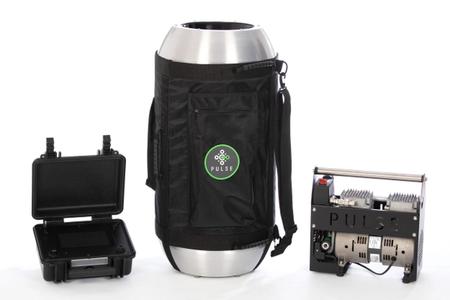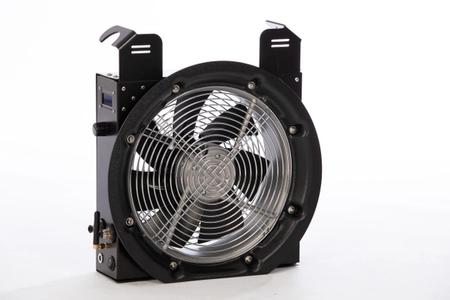Article
Understanding PAS2035:2023 and the role of airtightness testing
PAS2035 is the UK’s overarching framework for the retrofitting of dwellings, developed as part of the government's response to the Each Home Counts review. It provides a structured, whole-house approach to energy efficiency improvements, ensuring that retrofit projects meet high standards of performance, safety, and sustainability.
The specification covers all aspects of retrofit project oversight, from assessment and design to evaluation. It outlines the roles and responsibilities of key stakeholders, such as Retrofit Assessors, Retrofit Coordinators, and Retrofit Designers, to ensure that improvements are carried out in a coordinated and effective manner.
Its main scope up may be summarised as:
- Assessment of dwellings for retrofit;
- Identification and evaluation of improvement options (energy efficiency measures, or EEMs);
- Design and specification of EEMs (whether individual measures or packages of multiple measures); and
- Monitoring and evaluation of retrofit projects.
Key Updates
An updated version of the PAS2035 standard was first issued in September 2023 entitled PAS2035:2023. Since then transitional arrangements have been in place such that the industry has had a choice of either adopting the new standard with immediate effect or being able to work to the 2019 version up until 30 March 2025.
When PAS2035 was updated in 2023, it included several revisions to enhance its effectiveness and alignment with industry best practices. These updates included:
- Removal of Risk Pathways: The risk assessment process has been simplified, ensuring that retrofit measures are appropriately tailored to different building types regardless of project type and size.
- Enhanced Ventilation Requirements: Recognizing the importance of ventilation in increasingly airtight buildings, the updated standard introduces stricter guidelines on maintaining adequate indoor air quality alongside airtightness improvements.
- Greater Emphasis on Performance Monitoring: More robust monitoring and evaluation procedures have been introduced to ensure that retrofit measures deliver the expected energy savings and comfort improvements.
- Refinements to Roles and Responsibilities: Clarifications have been made to the responsibilities of Retrofit Coordinators, ensuring they play a more active role in overseeing project compliance and quality assurance.
These changes are explored in greater detail in this article written by Elmhurst at the time of the release.
The purpose of this article is to elaborate further on the implications of the changes with regards to airtightness testing. Previously the role for air permeability testing was on higher risk ‘pathway C’ projects only and/or for the purposes of background ventilation testing in accordance with Annex C.
Under PAS2035:2023, there is now a blanket requirement for all properties to have an 'airtightness and air leakage testing strategy' as part of the retrofit design process where the project includes any building fabric measures. Section 8.2.35 of the document states:
“Where the retrofit design includes any EEMs for the improvement of the building fabric (e.g. insulation, airtightness, replacement windows), the Retrofit Designer or Retrofit Coordinator shall develop an airtightness and air leakage testing strategy as part of the retrofit design.
NOTE 1: The strategy should consider the impact of EEMs on the airtightness of the building and should: a) Explain the benefits of air leakage testing and the risks of not doing so; b) Include the airtightness target(s) should one be set for the dwelling(s), especially where a whole-house retrofit is undertaken or if required to specify the correct ventilation system (see Annex C); and c) Recommend any other airtightness or air leakage testing required before, during or after installation of the EEMs.
NOTE 2: An air leakage test verifies that there are no major air leaks through the installed EEMs. Ideally, a test before and after any major insulation project should be undertaken to verify that air leakage has been reduced through the building external envelope. This is the protect the building structure from moisture problems and reduce heat loss. Air leakage testing requires fan pressurisation and/or depressurisation to allow time for leakage checking.
NOTE 3: An airtightness target can be beneficial for the project to improve quality control and workmanship during the construction stage. Verification of the airtightness standard is different from the air leakage testing as described in Note 1.”
The standard goes on in Section 8.2.36 to explain:
“Where an airtightness target is set as part of the strategy under 8.2.35, the retrofit design shall also include a requirement for the Main Contractor or Retrofit Installer to demonstrate compliance with the airtightness standard by means of an approved test for every dwelling, following CIBSE guidance.”
Although the requirement for testing isn’t explicitly stated, there’s a mandatory requirement of an airtightness and testing strategy on every project. This could be a strategy that disputes the need to set any targets or carry out any testing but it’s difficult to imagine why any project would seek to do this given the upsides.
The benefits of airtightness testing pre and post on PAS2035 retrofit projects include:
- Use a Level 1 qualified airtightness tester and use the results from your tests to input into your EPCs for more accurate ratings (find out more in our EPCs article)
- Robustly satisfy 8.2.35 and 8.2.36 requirements of PAS2035:2023
- Deliver better performing projects, with reduced air leakage not only reducing uncontrolled heat loss but also protecting the building structure from moisture problems.
- Use the same equipment and tester visit to carry out any additional background ventilation testing and to inform your ventilation strategy and ensure satisfactory compliance with Annex C of PAS2035.
- Satisfy the new expanded guidance on Moisture Risk Management - with airtightness improvements comes an increased need for effective moisture control. The updated PAS 2035 standard includes more detailed requirements for managing condensation and damp risks in retrofitted properties.
The other notable change with the latest PAS2035 document is the requirement for the airtightness testing to be carried out in accordance with CIBSE TM23 and for testers to be registered as level 1 qualified with an appropriate airtightness competent persons scheme.
Overall we anticipate these changes to drive a bigger market for airtightness testing than what has previously existed under PAS2035:2019 which only required airtightness testing on pathway C jobs.
Background Ventilation Testing
In addition to the air permeability testing side of things, there continues to be a role for qualified background ventilation testers as a means of satisfying Annex C of the PAS2035:2023 document. Ventilation adequacy must be assessed for all jobs (C.2.1) and the type of ventilation system and its suitability is at least in part defined by the level of measured airtightness achieved after the installation of the energy efficiency upgrade measures (C.3.2)
“…the Retrofit Designer shall confirm the adequacy of the existing ventilation (if any) of the dwelling(s) as revealed by the dwelling assessment report…”
More information on background ventilation testing can be found on the Trustmark website here and a list of testers approved under the scheme operated by the Installation Assurance Authority can be found here.
Conclusion
PAS2035 continues to evolve to meet the growing demands of the UK’s energy efficiency agenda. The updates introduced in 2023 have strengthened the framework, ensuring that retrofits are carried out with greater accuracy, safety, and accountability. With the upcoming changes set to take mandatory effect in April 2025, the standard will further reinforce the importance of air permeability testing, quality assurance, and industry-wide competency. For those involved in retrofit projects, staying ahead of these developments is essential to ensuring compliance and delivering high-quality, energy-efficient homes.
Explore our range of airtightness products which are designed to assist with PAS2035 compliance.




